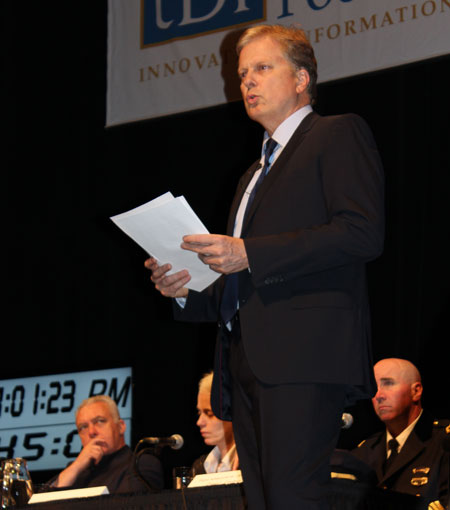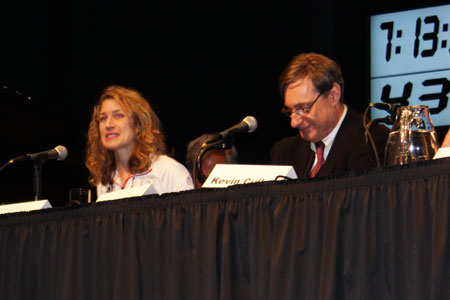Cop, doctors share marathon stories
Some of those closest to the devastating Boston Marathon bombings shared their stories at Emerson’s Cutler Majestic Theatre on April 25 in a town hall-style meeting sponsored by WBUR-FM and The Boston Foundation.
“Boston After the Bombings: A Public Conversation of Hope and Healing,” was broadcast live on WBUR and moderated by Tom Ashbrook, host of On Point.
“This has been the most emotional week I’ve ever seen in Boston, even after 9/11,” Ashbrook said.

Panelist Dr. Natalie Stavas of Boston Children’s Hospital ran the marathon April 15 and had just crossed the finish line when the two bombs exploded nearby, killing three and injuring more than 200, including eight Emerson students who received minor injuries.
“All I can remember was that it was like a battle scene,” Stavas said. “Like a minefield with blood and debris and terror in people’s faces.”
Panelist Dr. Barbara Ferrer, executive director of the Boston Public Health Commission, said 90 patients were transported from the explosions to hospitals within 30 minutes, and 100 were helped in the marathon’s medical tent.
“What we saw in Boston was not the result of a miracle, but [the result of] people who worked really hard over a decade to create a plan that was executed,” she said.
Stavas, who ran the race with her father, performed CPR on one woman, treated a serious wound on another woman’s groin, and wrapped a tourniquet around a man’s lower leg after his foot was blown off.
“I tried the best I could,” Stavas said. “But I carry around the guilt that I never did enough. It’s such a horrible feeling.”
Stavas was given an hour break in her work shift April 25 to participate in the panel discussion. She thanked the large crowd and countless well-wishers from Boston and around the world who have tried to comfort the victims.
“Your presence is so valuable… and helpful in the healing process,” she said. “You guys are the heroes to me, with all your support.”
